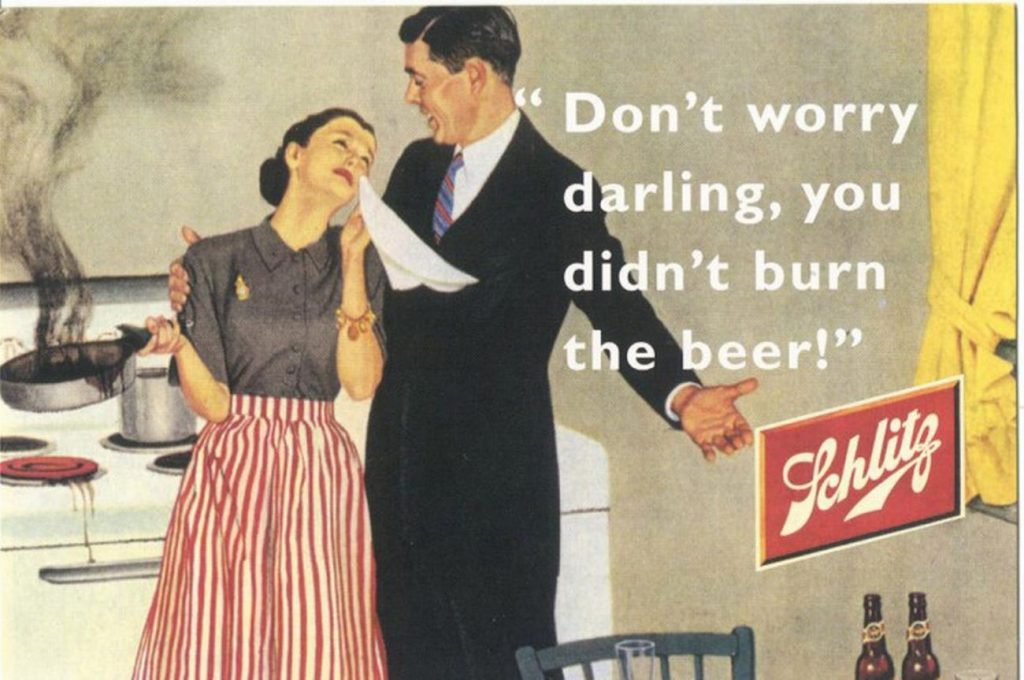
The above Schlitz ad is a classic ad from the 1950s conveying the toxic ideas of gender roles. The blatant sexism was not a rare thing of that era. The ad conveys how a wife’s role was structured in society during those times. Given the background and the context of the image, it suggests that women were viewed as fairly incapable and failed to succeed at their sole occupation, house work. The woman in the image looks humiliated. She is in tears, looking miserable and helpless as her husband mocks her. The most striking portion of the image is the text “Don’t worry darling, you didn’t burn the beer!”. This suggests that her failure is resolved by the existence of beer. The beer is symbolic of the toxic masculinity. The beer acts as way to subvert the emotions and the situation of the woman. It signifies how men ought to not show or care for emotions in traditional gender roles.
Blatantly sexist ads such as the one above have become rarer in today’s society. Nonetheless, many ads today still contain subtle messages that reinforce harmful stereotypical gender roles. When sexism prevails, the outcomes become part of our culture and people take it for granted. It is painful to imagine what young girls would think about such ads in those time periods. Often times, this discrimination is not obvious to many and they subconsciously accept the ideas behind such ads. When people are not aware of the sexism that permeates our daily lives, the young generation of women work harder to defend their rights and request for gender equalities.

In order to bring out the underlying assumptions of the ad, I made some changes to the text in the ad. I have decided not to change the images because I believe that they are important to the overall message and would change the underlying intentions and meaning behind the ad. I’ve changed the main text to read “Beer’s the only thing to you save you from your wife who fails at fulfilling her gender role”. The ad directly supports women’s gender roles in society and proposes beer as a solution for men who have wives that do not act according to their gender roles. I believe that this is the main message of the advertisement and the main impression it aims to leave on viewers. I also made sure this text was prominent by using the colour red instead of white to amplify the message’s importance in the ad. The colour red is often used to signify alertness or danger. Thus using red to highlight the dangers of the message to society. In addition, I changed the text’s font to ‘Bahram’, a sloppy font that is used for informal usage. The use of font signifies the little thought and empathy that was put into it by the creators of the ad. I believe these changes should make the viewers see the true implications of the advertisement. What may seem to be a simple beer ad is actually a gender role-promoting advertisement.